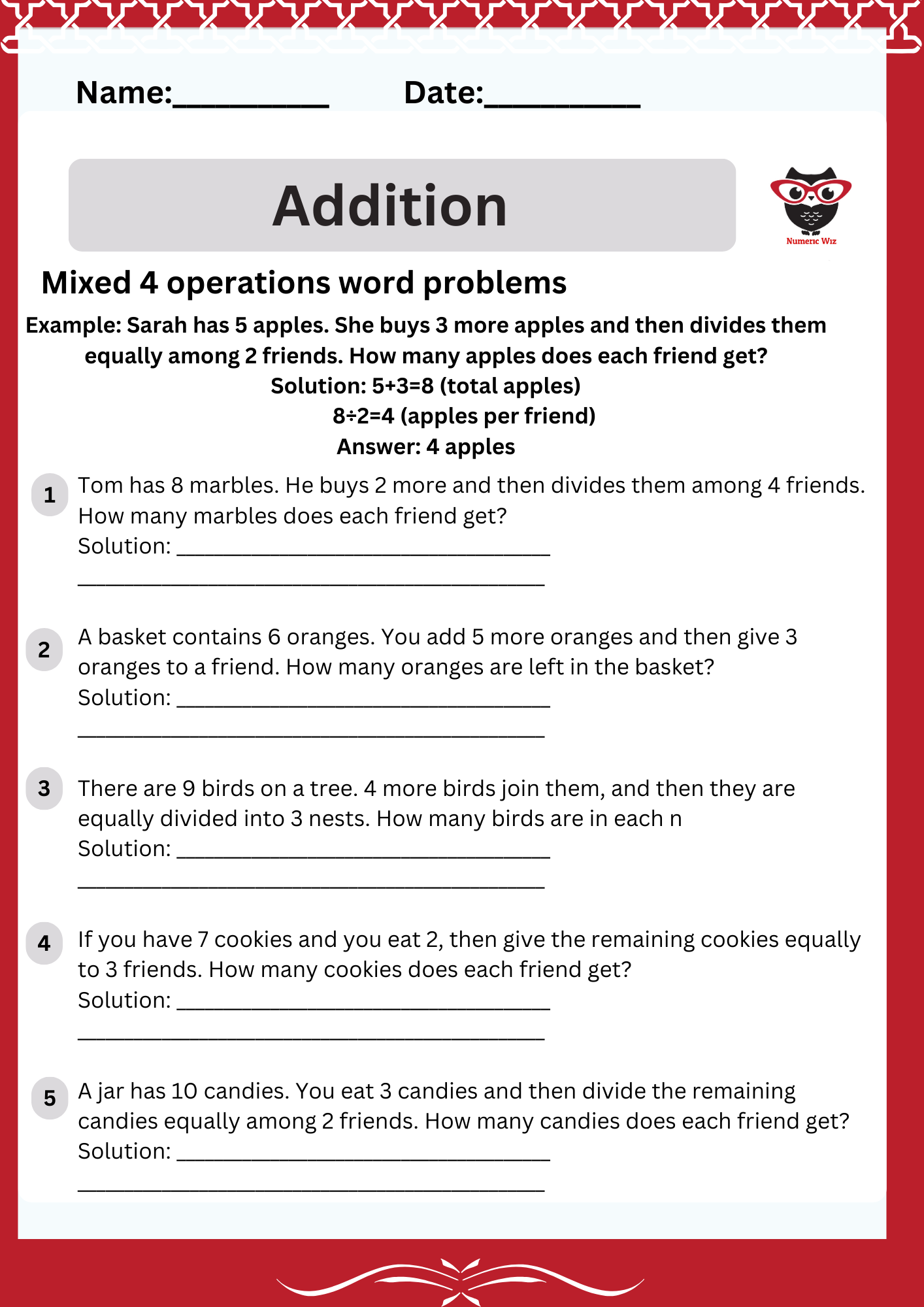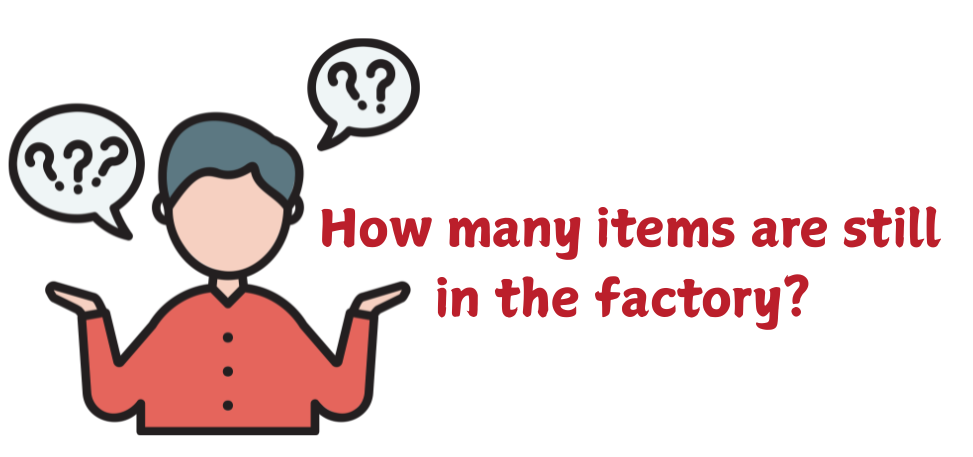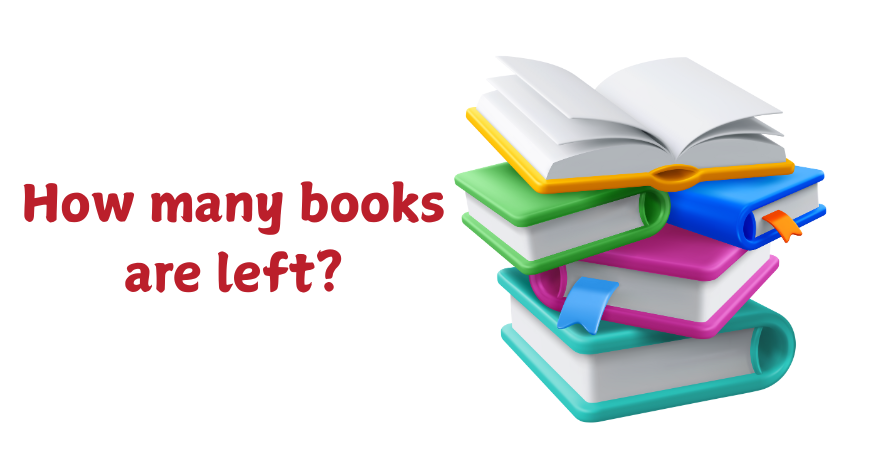
The four operations of arithmetic are addition, subtraction, multiplication, and division. In this context, we'll focus on addition, combining two or more numbers to find their total or sum. The symbol "+." represents this.

Addition in Word Problems: This involves using the arithmetic operation of addition to solve real-life scenarios. Word problems require understanding the problem, identifying the quantities to be added, and then applying addition to find the total or combined value.
In word problems, subtraction is determining the difference between two quantities. It is employed to resolve issues involving reducing, comparing, or removing something. Subtraction helps answer questions like "How many are left?" or "What is the difference?"
A factory produced 520 items in the first week and 435 items in the second week. They later shipped out 600 items.
Solution:
Final solution: There are 355 items left in the factory.
A bookstore had 825 books. They sold 245 books in the morning and received 120 new books in the afternoon. If the total number of books is equal to 700.
 Solution:
Solution:
Final solution: The number of books left is 700, and the equation is balanced.
Adding numbers is a fundamental math skill that helps solve everyday problems, from calculating expenses to measuring quantities. It builds a strong foundation for advanced arithmetic concepts like multiplication and division. Mastering addition improves problem-solving, logical thinking, and mental math abilities.
![]()
By practicing addition, you can solve real-world problems quickly!
![]() Let’s practice and evaluate your work together by adding numbers.
Let’s practice and evaluate your work together by adding numbers.
For a limited time
